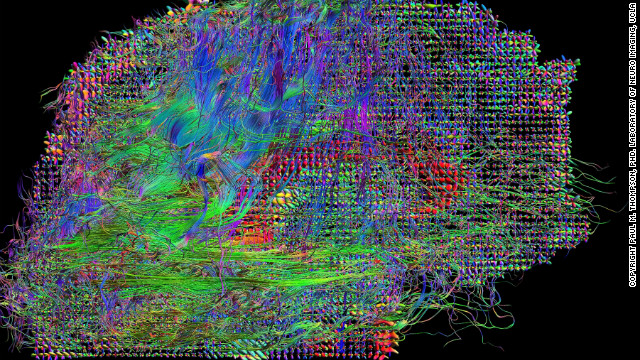Tagged: brain imaging
Connectome Progress Report
The Human Connectome Project (HCP) has started trials on volunteers with a state-of-the-art scanner.

New maps of the networks of live brains could lead to better treatments for neurological disorders
Today’s technology allows neuroscientists to map the brain’s connections on an unprecedented level of detail. The ultimate goal of the HCP is to create a map, or connectome, of every neuron and synapse to better understand how the brain works. A better understanding of the brain means a better understanding of brain disorders like schizophrenia or autism, which in turn means better treatment.
More
High Definition Fiber Tracking
There are numerous brain imaging techniques that allow us to gain insight into what damage the brain may have incurred after a patient has a traumatic injury. The ever popular fMRI measures blood flow to infer neural activity. Diffusion tensor imaging (DTI) uses the magnetic properties of water to look at white matter in the brain, while positron emission tomography (PET) uses radiolabeling to look for a specific chemical in the brain. All of these are important for possible disease diagnosis, however, there is skepticism around how dependent we should be on this technology, as the results should never be taken as the absolute truth.

Comparison of X-Ray to HDFT
Now, a new type of brain imaging developed by researchers at the University of Pittsburgh allows researchers to look for connections that have been broken as a result of traumatic brain injury, much like an X-Ray allows doctors to look for broken bones. It is called High Definition Fiber Tracking (HDFT). Although the technology is not specific at the cellular level, it is accurate in observing specific connections that have been lost as a result of injury. These lost connections act as a reliable predictor for cellular information, such as the percentage of axons that have been lost.
The accompanying publication in the Journal of Neurosurgery focuses on a case study of a man who sustained severe brain damage after crashing an all-terrain vehicle (public service announcement: this is why we wear helments!!!). Initial MRI scans showed hemorrhaging in the right basal ganglia, which was confirmed by a later DTI. The patient had extreme difficulty moving the left side of his body, and it was assumed to be a result of damage to the basal ganglia. It was not until the patient had a HDFT test that doctors could pinpoint the true problem: fiber tracts innervating the motor cortex had been lost. More